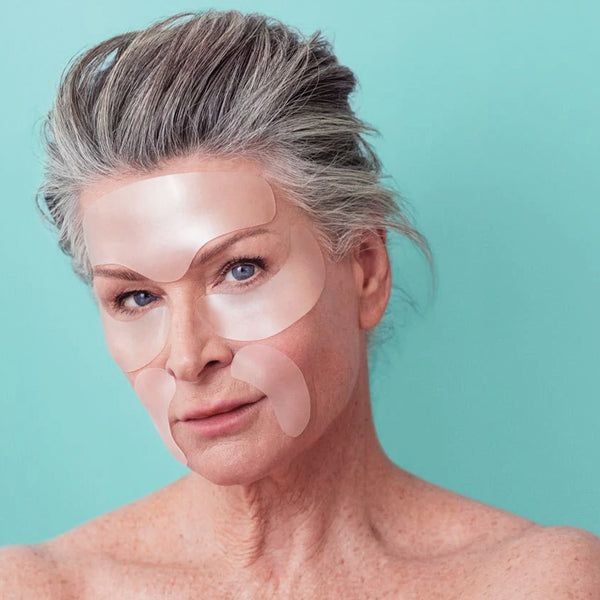Anti-wrinkle patches are becoming a popular choice for those looking to reduce the appearance of fine lines and wrinkles without invasive treatments. These patches promise to smooth out wrinkles and improve skin texture, making them an attractive option for people wanting youthful-looking skin. But how exactly do they work? In this post, we are getting into the science behind anti-wrinkle patches, the types of patches available, how to use them effectively, and what results to expect.
Introduction to Wrinkle Patches: Magic or Myth?

Often called “miracle patches” or “quick fixes,” these adhesive patches claim to smooth wrinkles, hydrate skin, and deliver visible results without injections or lasers. They’ve quickly found a place in skincare routines, especially among people who want an extra boost for their anti-aging routine.
So, how do wrinkle patches fit into a typical skincare routine? Usually, they’re applied after cleansing and before moisturizing, targeting specific areas like the forehead, under-eye zones, or laugh lines. Many people incorporate them as part of their nighttime routine, letting the patches work while they sleep.
The Science Behind Anti-Wrinkle Patches
Wrinkle patches may seem simple, but there’s real science behind how they work. These patches often contain active ingredients for the skin, providing targeted benefits for fine lines and wrinkles. Here, we’ll explore the ingredients, how they work, and what science says about their effectiveness.
Active Ingredients in Wrinkle Patches
Most anti-wrinkle patches are made with ingredients known for their hydrating and anti-aging ingredients. Here are a few of the most common ones:
- Hyaluronic Acid: Known for its incredible water-retention abilities, hyaluronic acid helps plump up the skin, temporarily softening fine lines.
- Peptides: These short chains of amino acids signal the skin to produce more collagen, which can improve skin elasticity and reduce wrinkles over time.
- Collagen: While collagen itself has larger molecules that don’t penetrate deeply, it creates a film on the skin that enhances moisture retention, giving a smoother appearance.
- Retinol: Some patches contain retinol, a derivative of vitamin A that promotes skin cell turnover, which can reduce fine lines and improve skin texture over time.
How Do Wrinkle Patches Work?

Wrinkle patches work by delivering these active ingredients directly to the targeted areas. There are two primary mechanisms:
- Occlusion: The adhesive patch forms a seal over the skin, creating an “occlusive” environment. This traps moisture and increases ingredient absorption, helping the skin appear plumper and smoother.
- Micro-needling or Micro-structures: Some advanced patches use tiny, dissolvable needles or micro-structures made of active ingredients that painlessly penetrate the skin’s surface. This method allows for deeper, controlled delivery of active ingredients, enhancing their effects.
Scientific Studies on Patch Efficacy
Studies show that occlusion can significantly enhance skin hydration and improve the efficacy of topical ingredients. Research has also found that patches with micro-needling technology can improve fine lines and wrinkles more effectively than creams alone. However, results differ depending on factors like the ingredients, patch quality, and frequency of use.
How Skin Physiology Affects Patch Results
Our skin is designed to keep things out, which is why traditional skincare products may take time to show effects. Wrinkle patches work with this physiology by using occlusion or micro-structures to improve absorption and retain moisture. This makes the skin look fuller and smoother, helping reduce the appearance of wrinkles—at least temporarily.
Potential Side Effects and Risks of Using Wrinkle Patches

Anti-wrinkle patches can be a convenient addition to skincare routines, but they’re not without potential side effects. Knowing the risks and understanding if wrinkle patches are right for your skin type is key for safe and effective use.
Common Side Effects of Wrinkle Patches
While wrinkle patches are generally safe, some people may experience side effects, especially if they have sensitive or reactive skin. Here are a few common reactions to watch out for:
- Skin Irritation: Some patches, particularly those with strong ingredients like retinol, may cause redness, itching, or discomfort.
- Allergic Reactions: Patches containing ingredients like fragrances, essential oils, or certain chemicals may trigger allergic reactions. Symptoms include redness, swelling, and even small bumps on the skin.
- Dryness or Tightness: Some users report feeling dryness or tightness after using patches, especially if the patches pull on the skin or if they’re left on for too long.
Who Should Avoid Wrinkle Patches?
Wrinkle patches may not be suitable for everyone. Here are a few guidelines on who might want to avoid using them:
- People with Very Sensitive Skin: Sensitive skin types can react more easily to adhesive materials and certain active ingredients, potentially leading to irritation or redness.
- Individuals with Skin Conditions: If you have conditions like eczema, rosacea, or severe acne, it’s best to avoid wrinkle patches or consult a dermatologist first, as these conditions can make skin more prone to irritation.
- Those Allergic to Specific Ingredients: If you know you’re sensitive to ingredients like retinol, peptides, or synthetic fragrances, check the patch ingredients before using them.
Patch-Testing and Ingredient Awareness
To minimize the risk of side effects, it’s important to take a few steps:
- Patch-Test First: Before applying a wrinkle patch to your face, test it on a less sensitive area, like your wrist or behind your ear. Leave it on for the recommended time to see if any irritation develops.
- Read Ingredient Labels: Understand the ingredients in the patch, especially if you have known allergies or sensitivities. This is especially important for patches containing strong actives like retinol, which may need to be introduced gradually.
Evaluating Effectiveness: Do Silicone Patches Offer Permanent Solutions?

While their ability to smooth out wrinkles and hydrate skin is great, it’s important to understand what they can realistically achieve. These patches offer visible results, but they’re generally not a permanent solution to wrinkles.
Are Silicone Patches a Permanent Fix for Wrinkles?
Silicone patches work by creating a sealed, moisture-rich environment that smooths the skin and makes wrinkles less noticeable. This temporary effect results from the skin being plumped and hydrated rather than an actual reversal of the wrinkle formation. So, while silicone patches can reduce the appearance of fine lines, the effects are generally not permanent and fade once the patches are removed.
Temporary Results vs. Long-Term Benefits
The immediate effects of silicone patches are undeniable—they provide a quick boost in hydration, creating a smoother appearance for a short period. However, consistent use may offer mild, visible results. Over time, regular hydration from these patches can improve skin’s texture and elasticity, supporting long-term skin health even though wrinkles may not permanently disappear.
For long-term anti-aging results, it’s best to combine silicone patches with other treatments, like retinol-based products, hyaluronic acid serums, and a quality moisturizer.
Best Practices for Maximizing Results
Here are a few tips to help you get the best results from silicone patches:
- Consistency Is Key: Using the patches regularly can provide a more noticeable improvement over time. For temporary results, apply them before an important event or photos.
- Combine with a Skincare Routine: After removing the patches, follow up with a hydrating serum and a moisturizer to lock in the effects. This can prolong the look of smooth, hydrated skin.
- Use Overnight for Optimal Hydration: Many silicone patches are designed for overnight use, which allows more time for skin to absorb moisture and smooth out lines.
Anti-wrinkle patches, especially silicone ones, can be a valuable addition to your skincare routine, offering temporary wrinkle reduction and enhanced skin hydration. While they don’t provide a permanent solution, consistent use can support smoother, healthier-looking skin.

